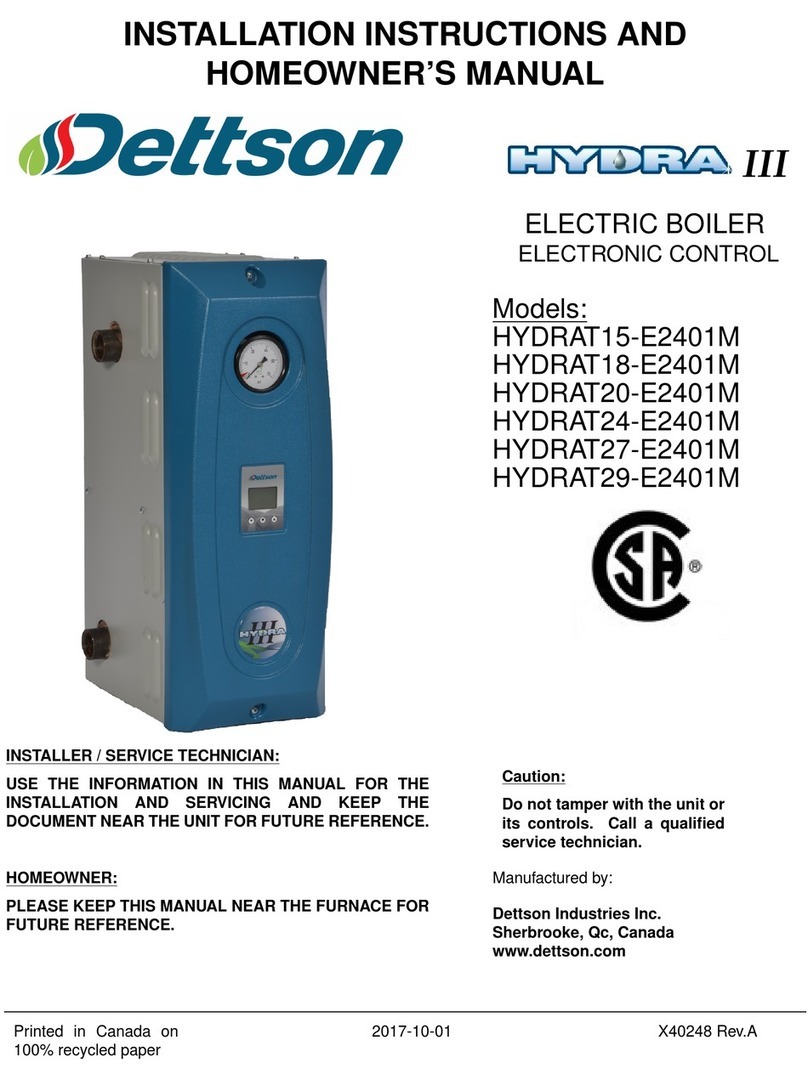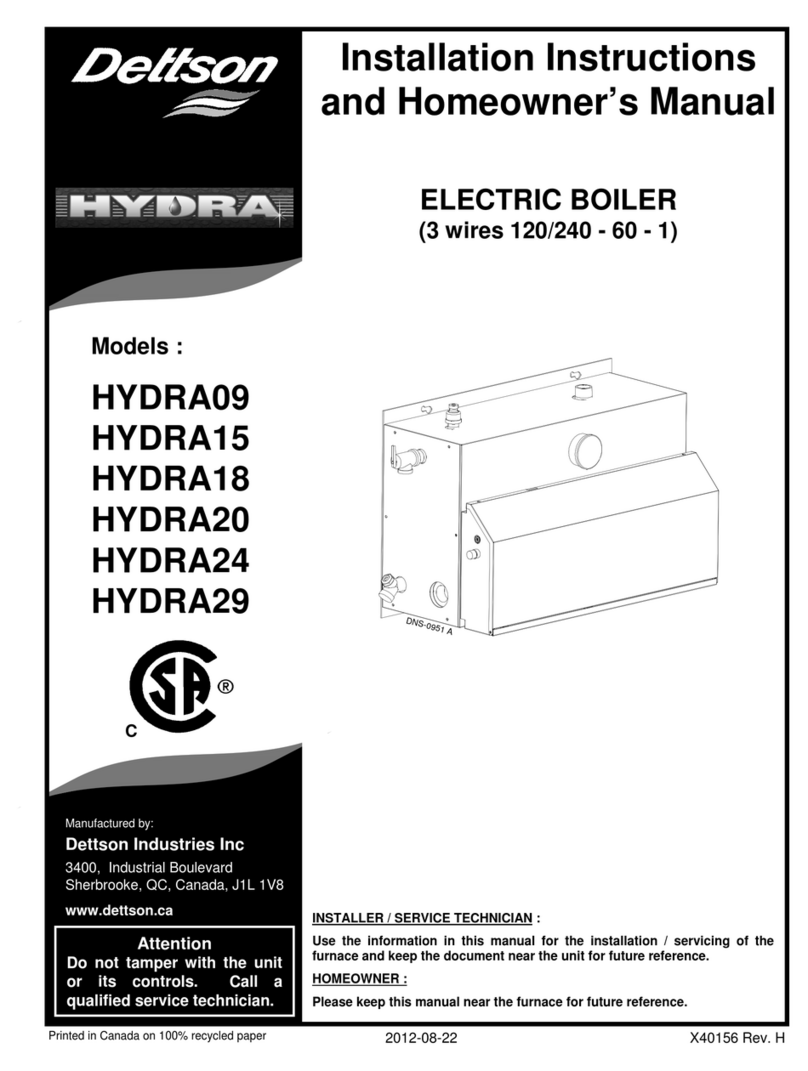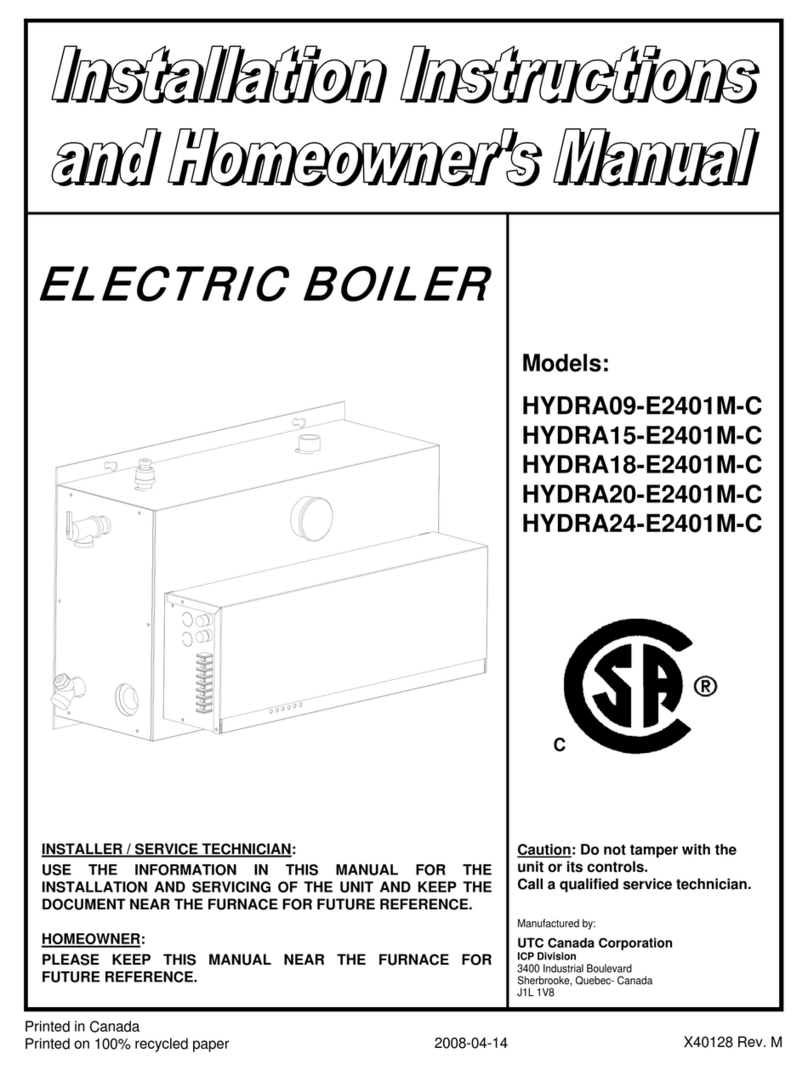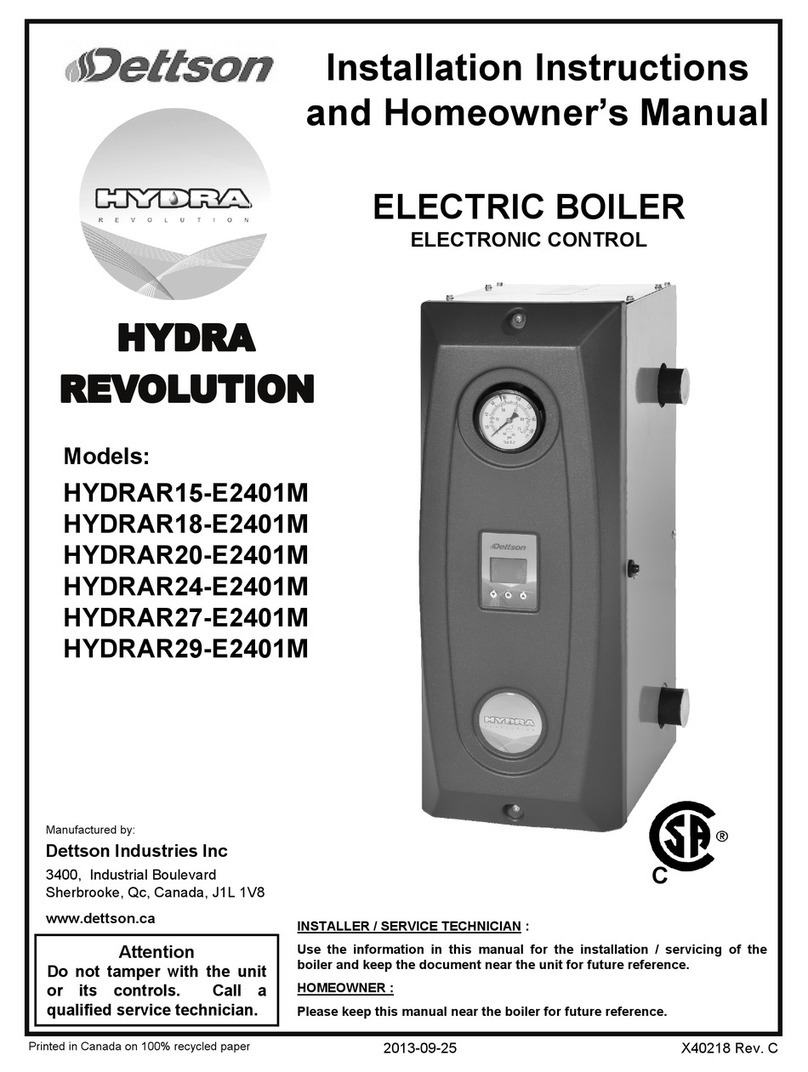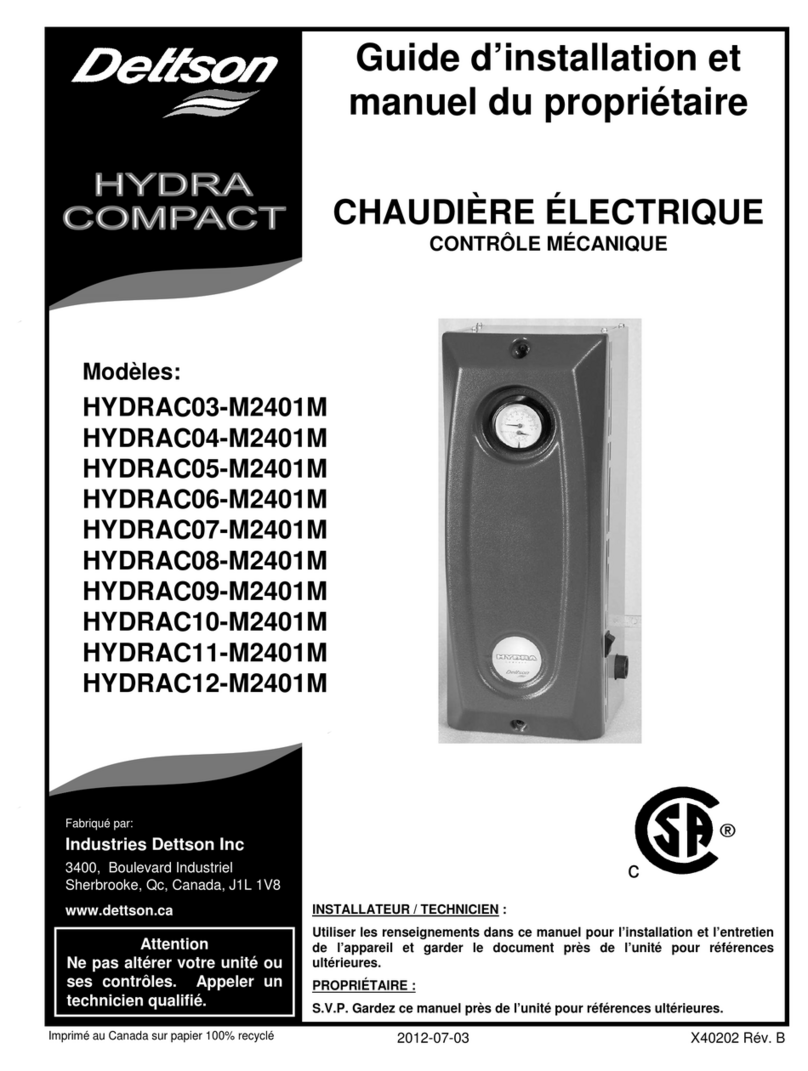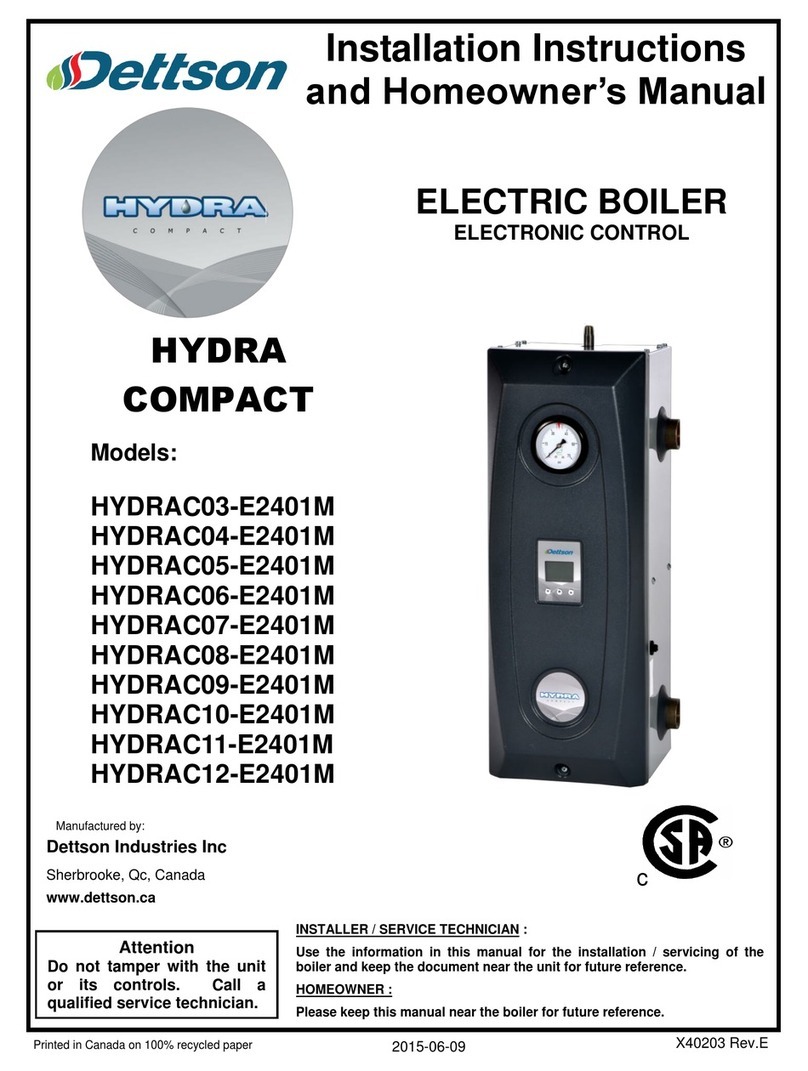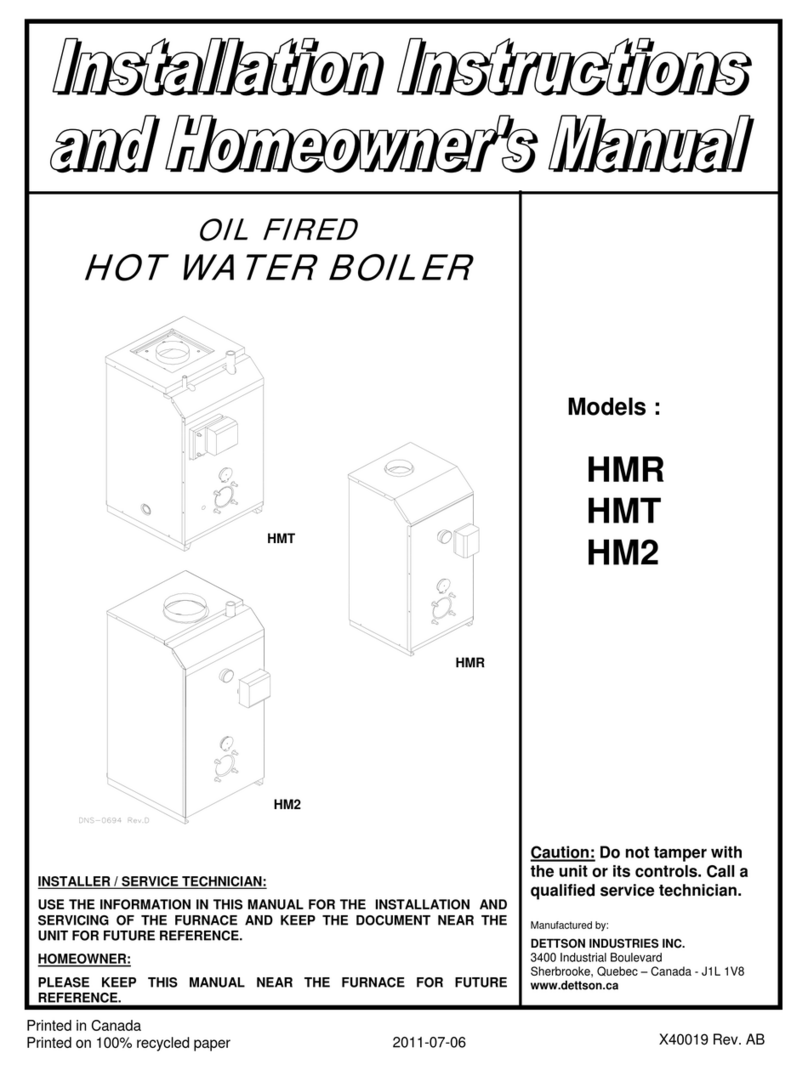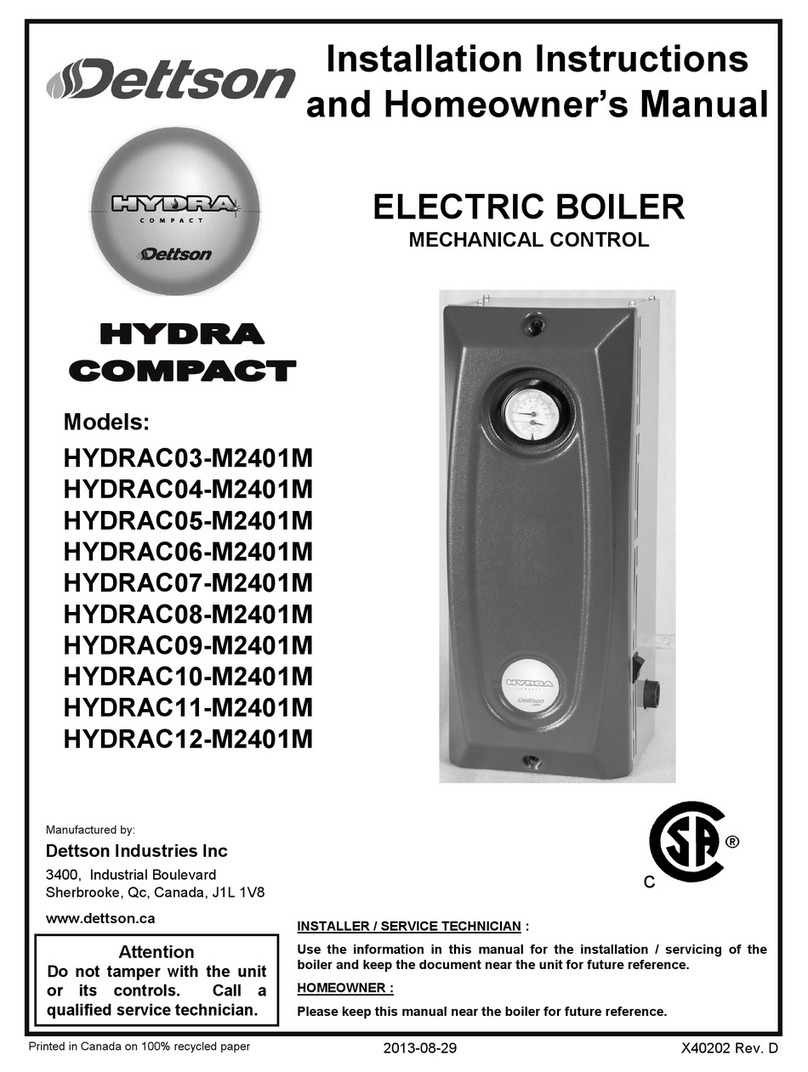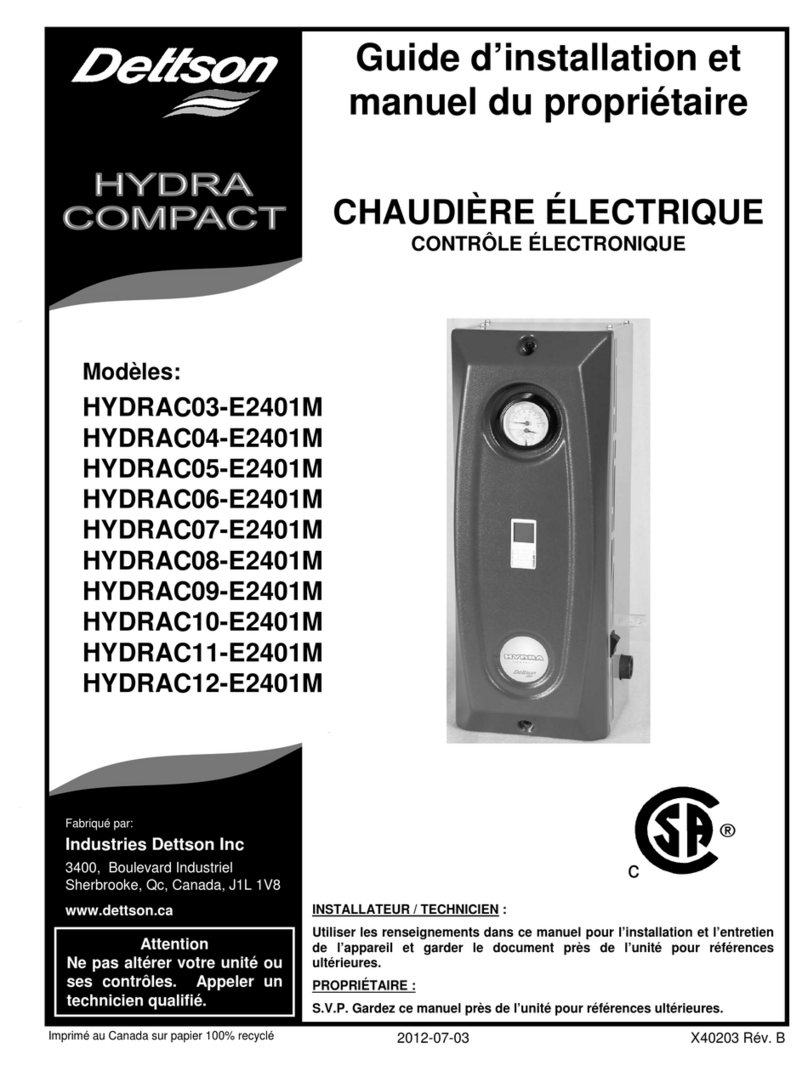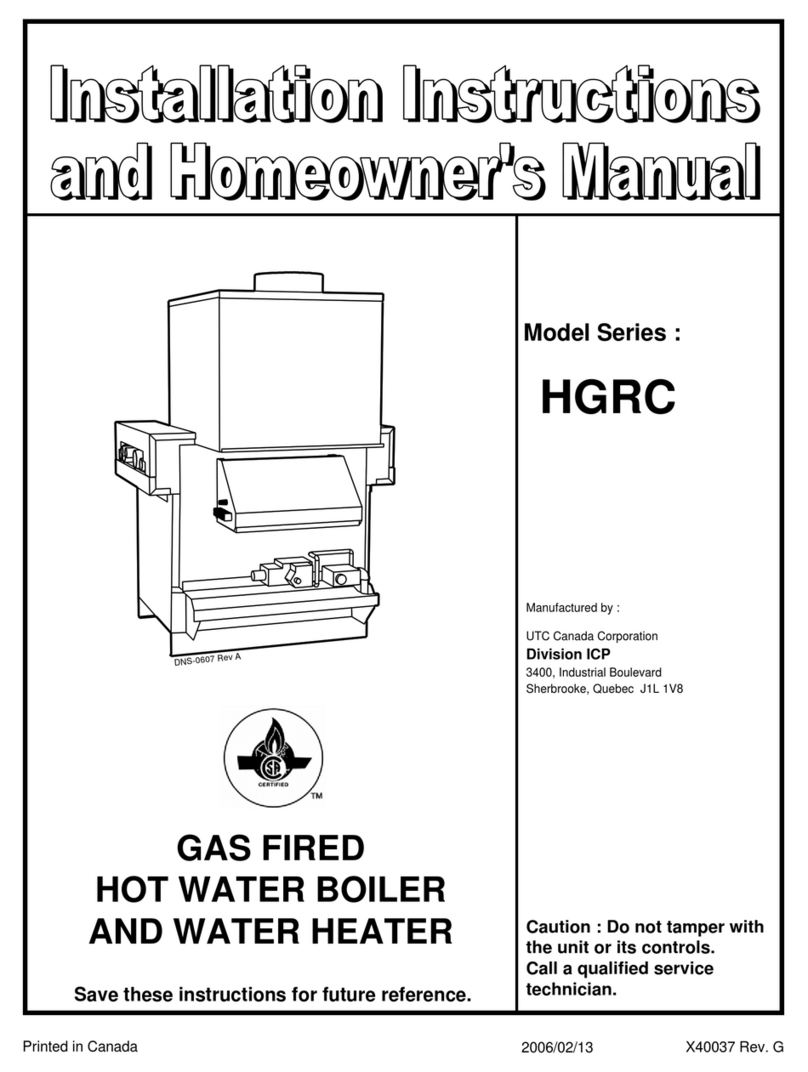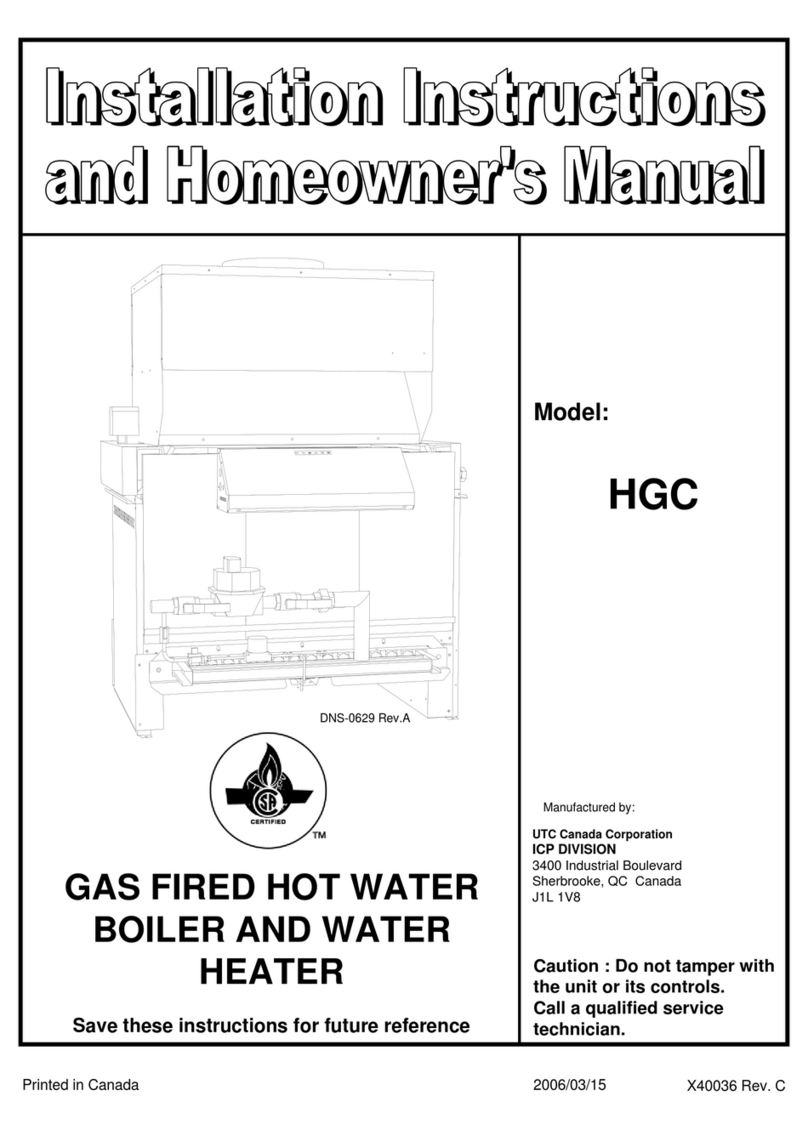
6
Freeze protection (when required)
WARNING
Only propylene glycol may be used in this
hydronic heating system, to prevent freezing.
It is recommended to add a maximum of 50% of
propylene glycol mixture to ensure proper
operation.
Do not use automotive anti-freeze, ethylene
glycol or any undiluted anti-freeze.
If the above recommendations are not followed,
severe personal injury, death or substantial
property damage can result.
All installations must include the following items:
a. 1 pressure regulator, adjusted to 12 psi, must be installed
between the boiler and the main water supply in the building;
b. 1 expansion tank, pre-pressurized to 12 psi and of appropriate
size;
c. 1 or more automatic air purge valves;
d. 1 or more circulating pumps of appropriate capacity.
CAUTION
To avoid water damage and/or scalding due to relief
valve operation, a discharge line must be connected to
the valve outlet and run to a drainage area. The
discharge line shall be installed in such a way that it will
allow for the complete drainage of the valve and the
discharge line.
7) INSTALLATION OF THE BOILER
At the time of installation, the following steps should be followed.
Refer to Figure 3, 4, 5, 6 and 7.
1. Choose an appropriate location. Mount the boiler securely onthe
wall, with the help of the mounting plate. Ensure that it is level
and that the minimum clearances are observed;
2. Install the drain valve and the safety valve according to the
mounting configuration as shown in Figure 1;
3. An air vent must be installed on the unit if installed upright
position, water connections at the bottom. In all other mounting
position, cork the hole with the ¼’’ plug provided.
4. Install the water supply and return piping with the 1" or 1¼" NPT
fitting;
5. The heating supply line must include:
a. 1 circulator along with 2 maintenance valves;
b. 1 automatic pressure reducing valve adjusted to 12 psi,
with a shut-off valve on the return water line;
c. 1 expansion tank;
d. 1 automatic vent.
6. The flow of water through the system must be sufficient to
continuously discharge the energygenerated by the boiler. If not,
the High Limit protector will disconnect all the electric elements
and a more or less frequent cycling mode will be established by
the Safety Control (see the Technical Specifications Table);
7. In order to ensure satisfactory water flow, the friction in the piping
system must not exceed the capacity of the circulator;
8. After having completed all piping connections, run water through
the system and purge the air. The automatic vent should be in
operation.
Note: Remove the plastic cover and check to see if the elements
are watertight.
8) ELECTRIC POWER SUPPLY
All electrical wiring must conform to the standards and regulations in
force and the Canadian Electrical Code CSA C22.1.
Electrical power to the boiler must come from a 120/240V-60 Hz or
208V-60 Hz, single phase, 3-wire, grounded circuit, protected by an
appropriately sized breaker, based on the total rating of the boiler.
When using 208V, change the connector’s position at the primary of
the transformer. Refer to the boiler nameplate and the technical
specifications in this manual to select the proper breaker and wire
size.
WARNING
RISK OF FIRE
The conductor sizing must conform to the last
edition of the local or national codes.
Failure to follow this rule can result in death,
bodily injury and/or property damage.
Power supply to the unit can be made using copper or aluminium
wires. The wire size must be decided in accordance to unit power
consumption, the over current protection type and capacity, the wire
type and length, and the environment where the unit is installed. If
an aluminium wire is used, other precautions (such as the use of a
DE-OX inhibitor) must be taken to insure the conformity of the
installation. In all cases, all the factors affecting the wire gauge must
be considered and the installation codes followed.
The exterior of the unit must have an uninterrupted ground to
minimize the risk of bodily harm. A ground terminal is supplied with
the control box for that purpose.
In the event that wires inside the unit require replacement, these
must be as same type as originals. (Copper wiring only)
1. CONNECTING THE CIRCULATING PUMP
Connect the circulating pump on 120V connections points identified
P-P in the control panel as shown in Figure 2. The control is designed
to operate the circulator on thermostat demand.
2. CONNECTING THE THERMOSTAT
Single heating zone
Connect the low voltage thermostat to R-W terminals located inside
the control panel. See Figure 4.
Multiple heating zones
Connect the contacts of the motorized valves or pump controls to R-
W terminals inside the control panel. See Figure 5 and 6.
Compliance with Canadian Energy Efficiency regulations
The jumper between W1 and W2 must remain connected in order to
comply with the Canadian Energy Regulations.
